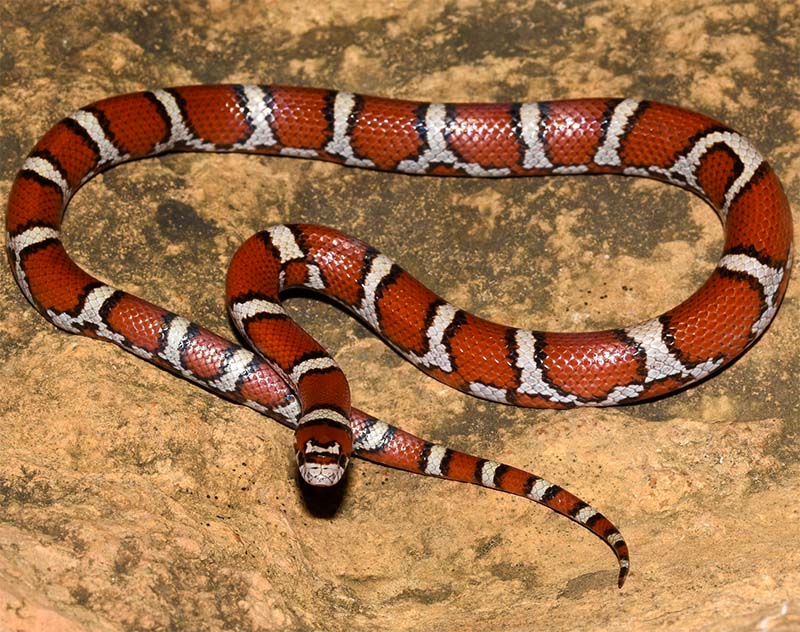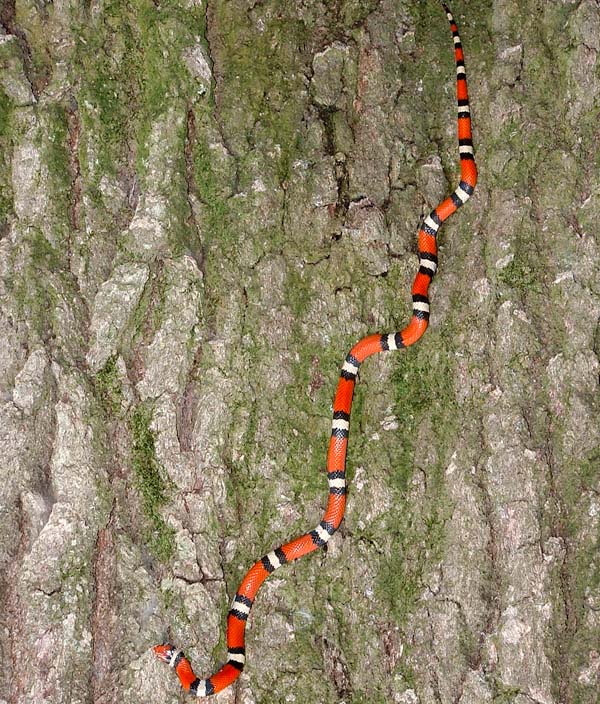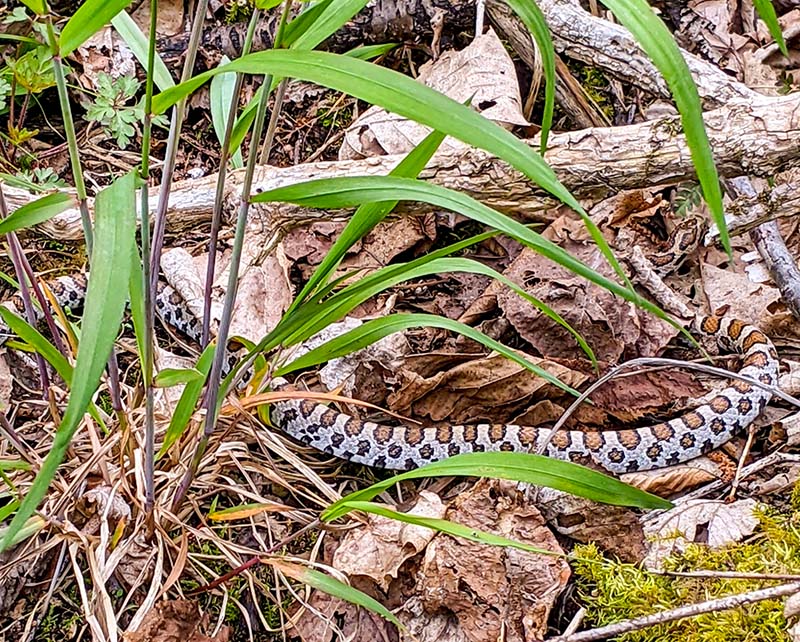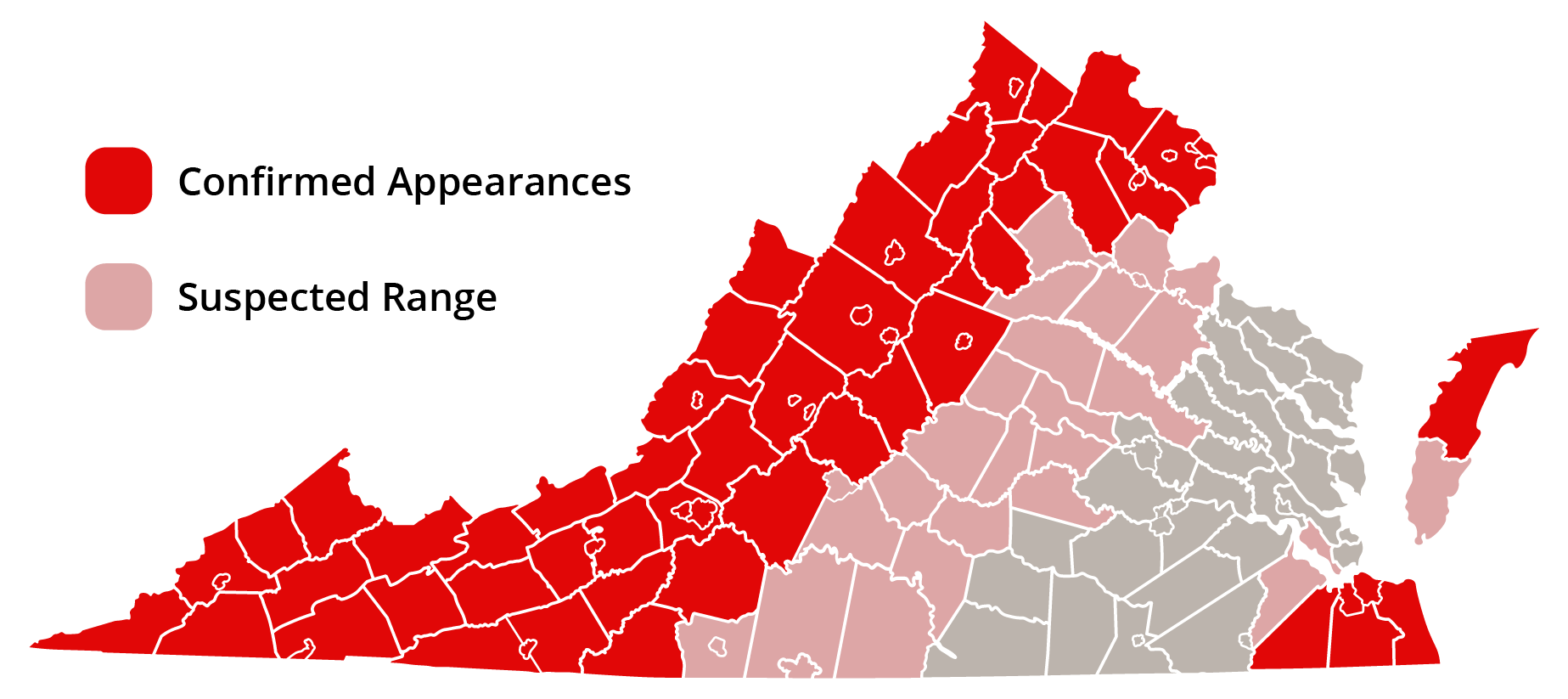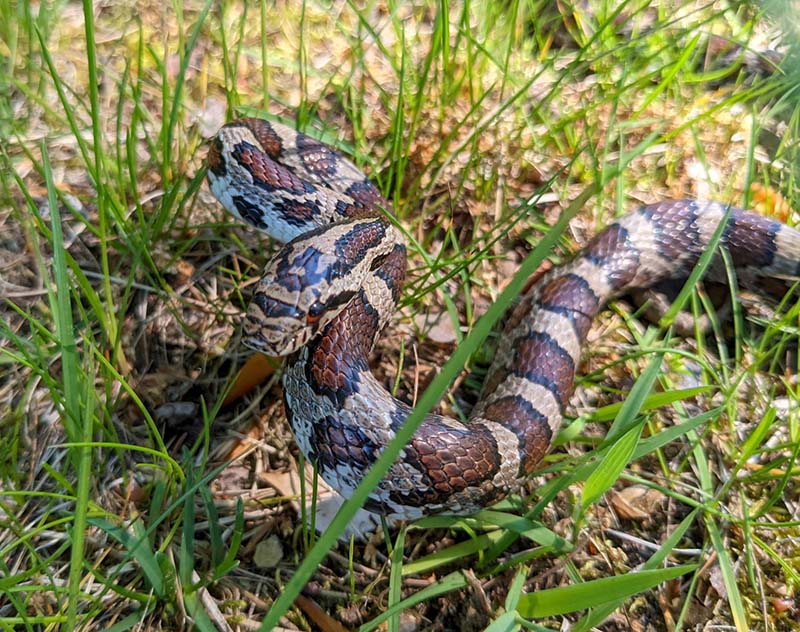
- Scientific Name
- Lampropeltis triangulum
- Range
- Western Virginia
- Also Known As
- Red Milksnake, Chicken Snake, cow-sucker
- Venomous
- No
- Features
- 3 Phases: Blotched, Banded, Intermediates
- Prey
- Rodents, Birds, Eggs, Frogs, Fish
- Litter Size
- 10 Eggs per Birth
- Life Span
- 3 - 4 Years
- Length
- 24 - 36 Inches
Quick Links for Eastern Milksnake
Eastern Milksnake Description
Eastern Milksnake Appearance
These snakes’ appearance can vary wildly. In Virginia, there are three different appearances of this snake called phases.
Blotched Phase
Banded Phase
They have red rings separated from yellow rings by black rings. These patterns are extremely rare here in Virginia, and it is possible they don’t occur here at all.
Intermediates
Red, Yellow, and black rings, that form blotches. Blotches also appear on the sides as well. These snakes tend to be the in-between from blotched and banded phases
Size
This snake is rather small, with adults being 7.5 – 11 inches tall. The record size was 13 inches. Females tend to be an inch larger on average.
Behavior
This snake is secretive, and prefers to hide. Due to this, they love to blend in with ground litter and other debris, such as rocks and logs. But they also know how to swim and climb, if they need additional cover.
If threatened they prefer to run away, but if cornered or harassed they may vibrate their tails and strike quickly and energetically. But otherwise they are rather docile snakes.
Eastern Milksnake Range and Habitat
Range
These are commonly found in the mountains in Western Virginia. However, they have been suspected to appear as far east as King George County. This snake is commonly found in the Midwest going as far west as Iowa, while avoiding most of the southern states near the coast.
Habitat
Due to this snake’s wide range it’s habitat varies. But here in Virginia they prefer the forested regions, but they can be found in swamps, farmland, and beaches.
Diet
They are opportunistic eaters, which means that they tend to eat whatever they can get a hold of. But they most commonly eat rodents.
Juvenile milksnakes tend to eat earthworms, crickets, slugs, and other insects.
There is a myth that the milksnake sucks milk from cows, which is how they got their name. But this isn’t true, but they are common around barns as they floor is cool and sheltered. The supply of vermin such as rats in barns makes them perfect places for milksnakes to be in, causing the myth to come about.
Reproduction and Young
Reproduction
Mating season starts in early May to late June. And then they lay their eggs in June and July.
Eggs and Young
They lay between 3 to 24 eggs per clutch (10 is about the average), and tey choose to lay them in areas with a lot of cover such as underneath logs, boards, rocks, and leaves.
These eggs will hatch in September or August. The juveniles tend to be around 8 inches long when born, and will tend to have the same coloration as the adults, if a little brighter and pinker.
